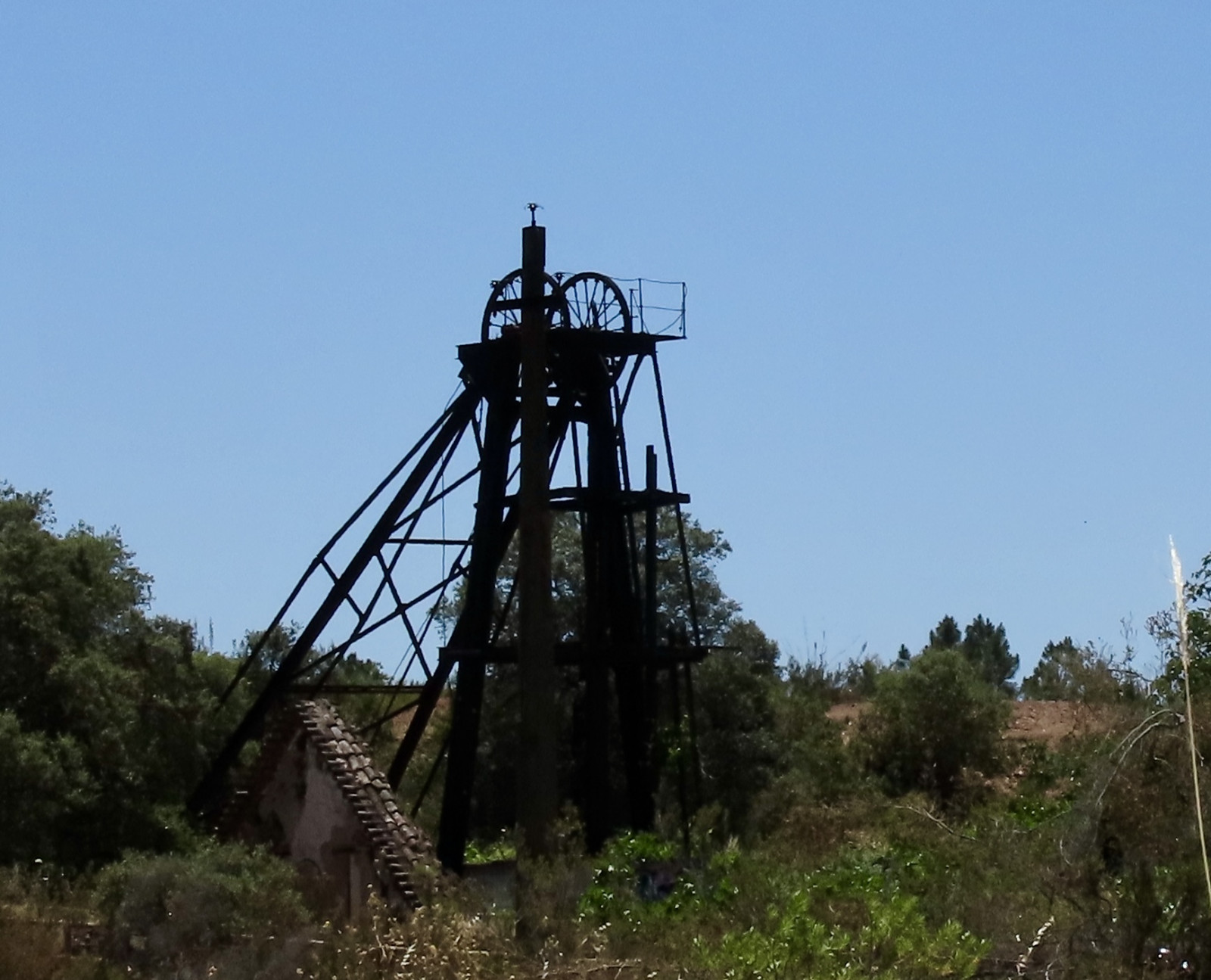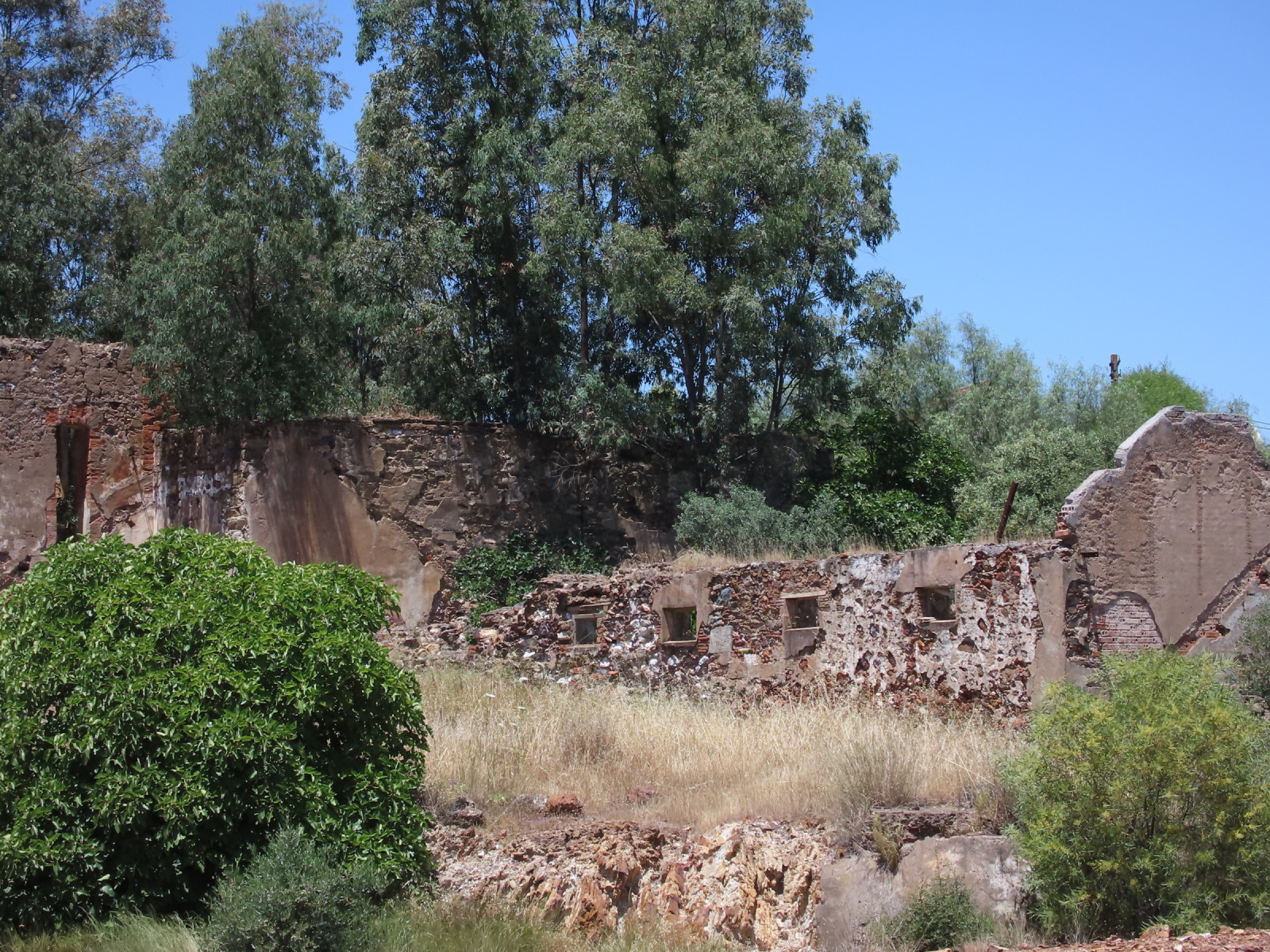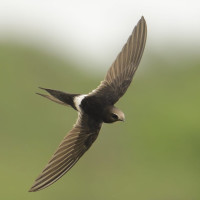Description
The old São Domingos Mine is a unique place. Once an important copper mine, it is now abandoned. The rocky landscape, devoid of vegetation, is reminiscent of a lunar environment. This place is famous among birders because Kafferseiler nest in the old mining buildings and can be observed here regularly.
The mining area is also good for Middelhavssteinskvett and Pirol in summer. During spring migration there are Maurersanger, Vendehals and Blåtrost. Svarthodesanger are everywhere. The local breeders include Middelhavsspurv, Stork, Blåskjære and Hærfugl.
Details
Access
Mina de São Domingos is located on the left bank of the Guadiana River, 17 kilometers east of Mértola. Access from Mértola is via the national road 265. There is ample parking in the village of São Domingos. Click on a P in the map for directions to a parking spot. The scrub area around the lake is excellent birding with Sørnattergal and Grønnspett common. The old mine workings on the other side of the road is where you will find Middelhavssteinskvett, Blåtrost and near the old mine buildings Kafferseiler. Other birds to look out for are Turteldue, Vinsanger and Trelerke.
A part of the route can be explored on the route of the old railway, whose tracks have already been raised and which can easily be recognized. This route passes next to the old mine buildings.
Terrain and Habitat
Scattered trees and bushes , ParkConditions
Flat , Dry , Open landscapeCircular trail
YesIs a telescope useful?
Can be usefulGood birding season
Spring , SummerBest time to visit
SpringRoute
Unpaved roadDifficulty walking trail
Average walkAccessible by
Foot , Bicycle , CarBirdwatching hide / platform
NoExtra info
The old Minas de São Domingos are a kind of open-air museum which you can visit for free. It looks like a set from a science fiction film. There are information signs in Portuguese and English in various places to give you more background information about the metals in the ground and the mining village. A walking route of 14 kilometers has also been set out, where you can see everything that has to do with the mine. If that's too much for you, you can also suffice with just the ruins at São Domingos, where most of them can be seen.
The main mine shaft is more than clearly recognizable. The shaft has now filled with water, creating a kind of lake. Around the lake you see types of stone in all kinds of colors and the water itself also looks a bit atypical. The water is heavily contaminated by sulfuric acid. Wooden paths have been constructed along part of the lake, so you can view the water and the colored stone up close.
Next to the lake are the ruins of the old mining village. In the ghost town you can still see the remains of old houses, a chimney, the loading platform of the station, the old offices and more. There are always signs next to the ruins to indicate what once stood here, so that the place really comes to life.




